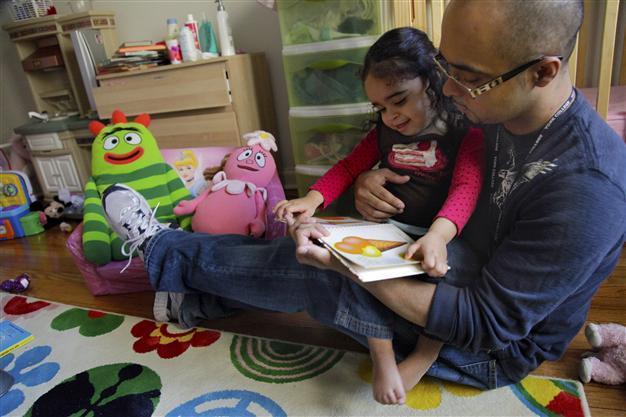Autism cases rise in US: study
WASHINGTON - Agence France-Presse

AP photo
The number of children diagnosed with autism in the United States has risen 23 percent since 2009, with one in 88 children affected according to official health data released on Thursday.Previous figures had shown the disorder was found in as many as one in 110 US children.
The rise may be due in part to improved identification of autism cases, particularly among children under three, but the extent of that influence on the overall number of cases is unknown, experts said.
"To understand more, we need to keep accelerating our research into risk factors and causes of autism spectrum disorders," said Coleen Boyle, director of the Centers for Disease Control and Prevention's National Center on Birth Defects and Developmental Disabilities.
The latest report found that autism spectrum disorder (ASD) is nearly five times more common in boys than girls, with one in 54 boys identified as having some form of the disorder.
The disorder was previously believed to be more common in boys than girls by a factor of four to one.
"Study results from the 2008 surveillance year show 11.3 per 1,000 eight-year-old children have been identified as having an ASD," said the CDC's Morbidity and Mortality Weekly Report.
"This marks a 23 percent increase since the last report in 2009." Autism includes a wide spectrum of developmental differences and may range from mild social awkwardness to complete inability to communicate, repetitive movements, sensitivity to certain lights and sounds, and behavioral problems. Its cause remains a mystery.
The data issued Thursday was based on autism prevalence estimates from 14 different areas in the United States.
Rates of autism spectrum disorder varied widely -- from 1 in 210 children in the southeastern state of Alabama to 1 in 47 children in the western state of Utah.
The biggest increases were noted among Hispanic and African-American children.
Early diagnoses were also on the rise for children under three, but a significant 40 percent of children in the study were not diagnosed until after their fourth birthday.
"One thing the data tells us with certainty -- there are many children and families who need help," said a statement by CDC director Thomas Frieden. "We must continue to track autism spectrum disorders because this is the information communities need to guide improvements in services to help children."
















